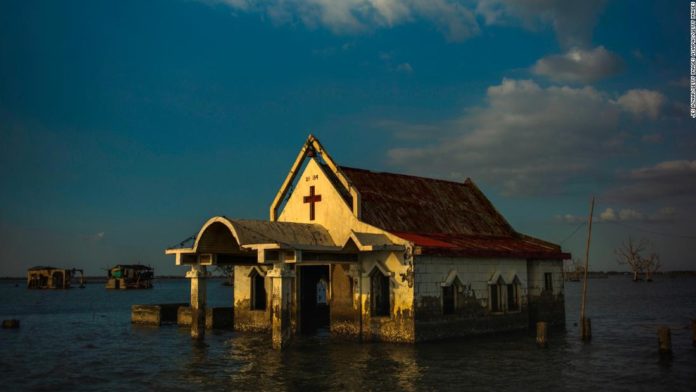Ocean warming, coral bleaching
So it’s perhaps hardly surprising that each new climate-related news headline seems to be worse than the last.
Just recently scientists announced that the oceans are
warming much faster than they had previously thought. The amount of heat now being absorbed in the seas equates to the energy generated by
exploding at least three Hiroshima-sized atomic bombs in the oceans every second, according to a calculation by The Guardian.
No wonder the coral reefs are dying — also at a rate that is much more rapid than anyone previously thought. When I wrote my
2007 book “Six Degrees,” looking at the predicted degree-by-degree impacts of climate change, it was expected that reefs would be undergoing regular bleaching events in about 2030.
Sadly, it’s already happening.
More than 90 percent of the Great Barrier Reef was affected by coral bleaching just over two years ago — the devastation was so severe that the marine scientists surveying the aerial data
wept.
I am currently working on an updated edition of Six Degrees. It’s a scary task because many of the impacts that I had previously put in later chapters — equating to three or more degrees of global warming — have had to be moved forwards, because they are happening already.
Another example is the worsening of climate extremes, like hurricanes. In 2007 I imagined a monster storm, worsened by global warming, hitting Houston in about 2040. Well that happened already too — in 2017 Hurricane Harvey poured so much water on the Houston area that it equated to the flow of Niagara Falls for 110 days.
Scientists later calculated that Harvey’s rainfall was likely intensified
by as much as a third because of the changing climate, in particular the warming oceans which act as rocket fuel for tropical cyclones.
The flooding from hurricanes is often aggravated by storm surges, which are worsened in turn by rising sea levels. There is news here too: this week scientists announced that the melt rate in Antarctica has
increased six-fold since the 1980s, which contributes to sea-level rise.
Greenland’s melt rate has also shot up, increasing four-fold between 2003 and 2013. This week scientists announced that the giant northern polar ice sheet has likely already
crossed a “tipping point” of irreversible decline. Recent Greenland melt rates are
now without precedent for hundreds, and probably many thousands, of years.
Closer to worst-case scenarios
When I wrote Six Degrees back in 2007 I felt that there was at least an odds-on chance of stabilizing global temperatures at or below 2 degrees Celsius, the policy target that was later agreed by world leaders at the Paris climate conference in 2015.
This now looks deluded. Achieving the two-degrees target would require the whole world to cut its net carbon emissions to
zero by mid-century, and to go carbon-negative — somehow hoovering up hundreds of billions of tonnes of extra carbon dioxide using
technology yet to be invented — from the atmosphere for decades thereafter.
In the real world, the opposite is happening. Emissions reached a
new record last year, dragging us ever closer to the worst-case scenarios employed by climate models, which yield
four degrees or more by the end of this century.
Perhaps the scariest thing of all is that millions of people — including the
President of the United States — are still climate skeptics. For them, conspiracy theories and mass psychological denial serve to justify business as usual.
Optimism risks letting us off the hook
It is customary to end articles like this with an optimistic call to arms, a rousing finale making that case that it is not yet too late to act to avoid the worst if only we scale up zero-carbon technologies fast enough to urgently cut emissions.
But that risks letting us off the hook. Instead, consider this.
There is no known geological precedent, for at least the last half-billion years of the history of life on earth, for climate change of the magnitude now projected this century to take place over such a short period of time.
To think that young people alive today will experience all of this within their lifetimes is an extraordinary thought indeed.

















